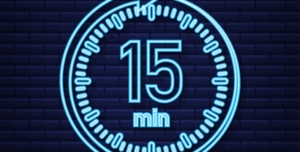
Chiropractic appears so unique to other forms of healthcare. It has many details, such as adjusting, palpation and requires, in most cases, multi-visit plans. Terms like; alignment, pinched nerves, slipped disc and bone cracking, are synonymous to chiropractic and not really to other fields of healthcare. Another detail of chiropractic is that it is not always practiced the same way between chiropractors. The differences can be many, such as, adjusting with instruments and not with the hands, using electrical stimulation, ultrasound or heat packs or not at all, or the length of the repetitious visits. In my practice I use a system of muscle testing called Applied Kinesiology. This can be confusing to some patients when they have seen one or more chiropractors for their care.
I think that every chiropractor practices in a way that plays into their strengths and weaknesses, their philosophies, and the financial demands of running a business and making a living. Over 23 years of practice I find that I am comfortable to treat in fifteen minute time increments. I had started with 45 minute time increments, then moved to 30 minutes and hung at 20 minutes for a few years. Now, I provide care in just fifteen minutes. It came down to necessity, focused practice and developing my confidence to bring value.
When I begin treatment, it starts before I even enter the room. Once I enter, I take in the room. I have gotten to a point that I can feel, without words how the room feels. The patient who is waiting for me to enter has filled the room with their feelings and thoughts. It is not a secret power, but a skill I had to learn to be the best benefit to the patient. Once it is taken in I then have to discern what I am perceiving. Is the patient calm and ready, distracted and out of touch, fretting, concerned, worried, anxious, in pain with little hope? Then I ask direct questions that will confirm what I am perceiving or to lead them into a better state of mind to allow their mind to align with the body’s unlimited potential to heal and communicate. In my opinion, the state of the mind of the patient, as well as the doctor, have to work together as a team.
Once the state of mind is accessed I have to go through possibilities of how to do the best I can to help the body move forward to healing itself. Those possibilities are many and varied. I need to find out the best approach and follow through for the appointment that would clear space or interference of the healing process. The possibilities that I regularly must process is: is the body’s nervous system able to process what I correct completely, is the physiology of the body in a state that no matter what I physically treat it won’t work, do I move a bone, fix a muscle, check nutrition, check their emotions, do cranial work, or ask questions about their life and struggles. It’s a lot of possibilities, but with muscle testing, it helps to confirm the steps and in 15 minutes. I can get enough of an idea to help heal my patient, but not have too much time to get lost in all the complexity of it, which allows me to focus on the true reason they are there to see me. I can find things that muscle testing tells me will work, but I cannot know for sure until I can follow up with the patient to see.
I give it my absolute best with as much compassion and understanding I can muster and still don’t know if it will work within the 15 minutes. However, I do know and rely on the fact that we all can heal, we just need to find the way and I love being a part of that.




